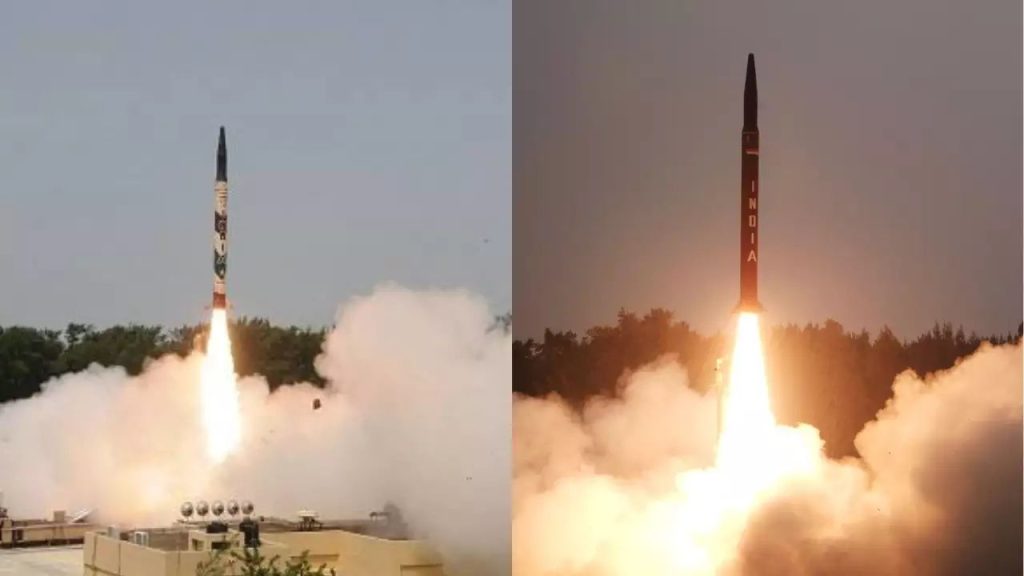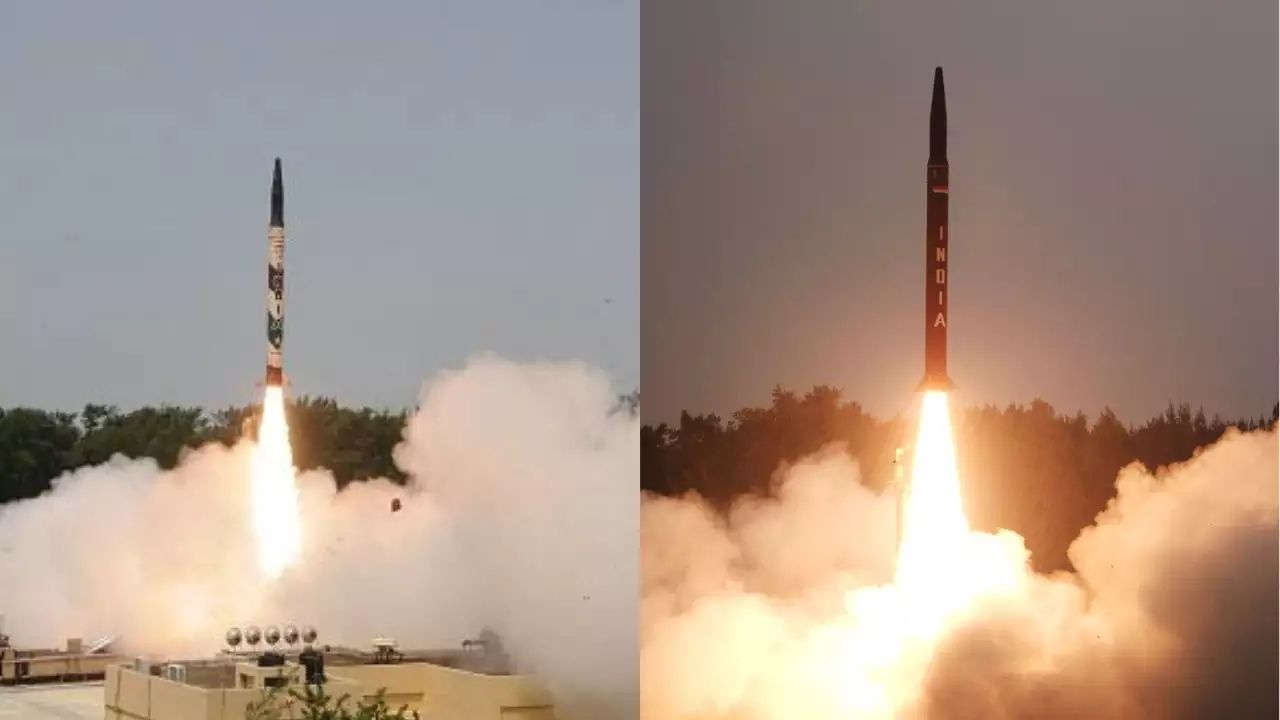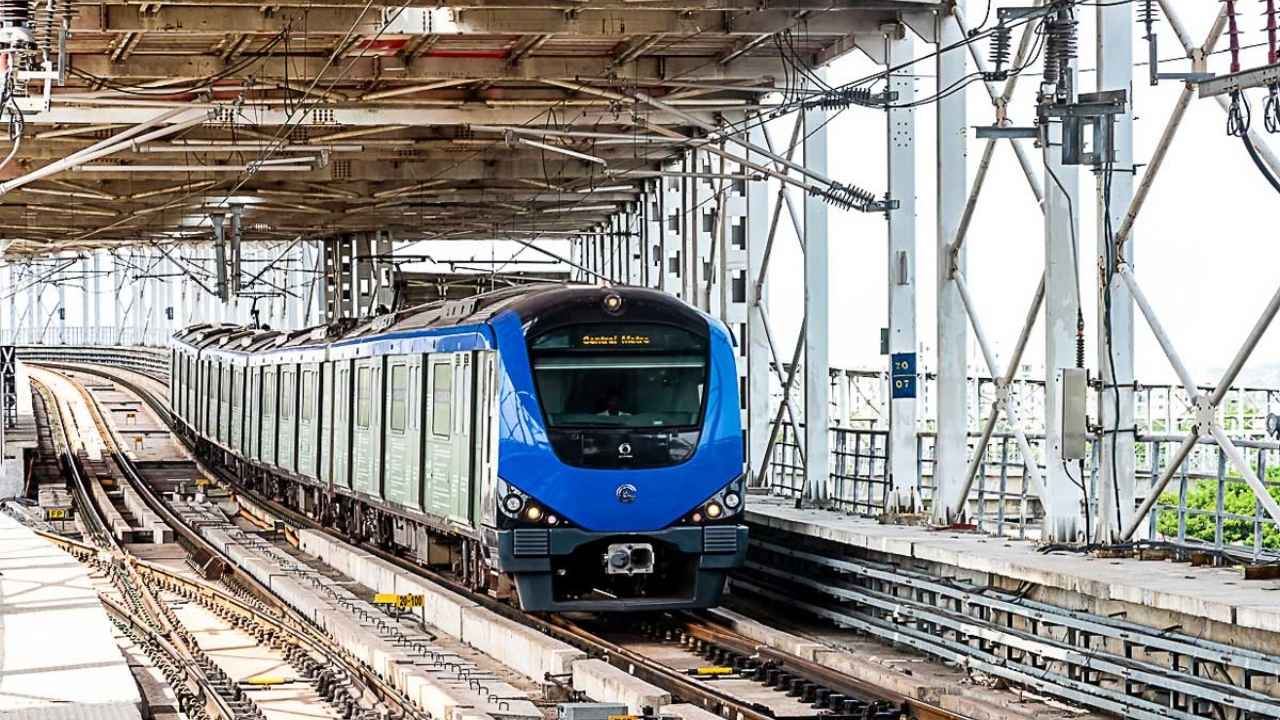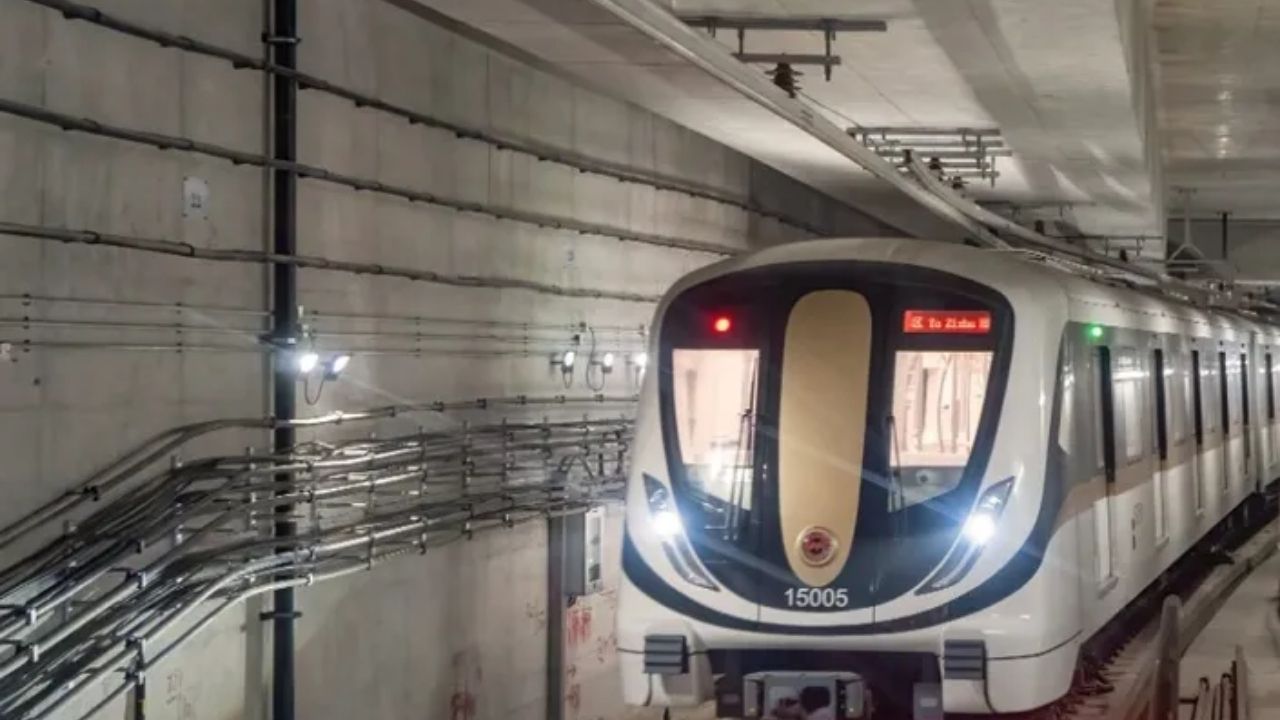On July 17, 2025, India successfully tested two of its most crucial ballistic missiles—Prithvi-II and Agni-I—from the country’s Integrated Test Range located in Chandipur, Odisha. This milestone marks an important moment for India’s strategic defense capabilities. These tests underscore the nation’s continued commitment to maintaining a credible defense posture, with a strong focus on nuclear deterrence.
The test firings were conducted under the supervision of the Strategic Forces Command (SFC), which ensures the nation’s readiness in the event of any potential threat. Both missiles, Prithvi-II and Agni-I, performed flawlessly during the tests, meeting all mission objectives. These successful tests are part of routine operational training exercises but have significant implications for India’s defense strategy, especially given the increasingly complex geopolitical landscape in the region.

The ability to launch these missiles serves not only as a demonstration of India’s technological prowess but also as a clear message to the world about its commitment to national security. This article breaks down the details of these missile tests, their technical specifications, and their strategic significance for India’s defense.
India Conducts Successful Ballistic Missile Tests in Odisha
| Key Fact | Details |
|---|---|
| Date of Test | July 17, 2025 |
| Location | Integrated Test Range, Chandipur, Odisha |
| Missiles Tested | Prithvi-II and Agni-I |
| Testing Organization | Strategic Forces Command (SFC) |
| Prithvi-II | Short-range, liquid-fueled, 350 km range, capable of carrying nuclear warheads |
| Agni-I | Medium-range, solid-fueled, 700-1,200 km range, capable of carrying nuclear payloads |
| Strategic Importance | Demonstrates India’s continued readiness for nuclear deterrence |
| Official Sources | Press Information Bureau, Gulf News |
India has a strong reputation for its defense innovations, and these successful tests of the Prithvi-II and Agni-I missiles showcase the nation’s commitment to bolstering its defense infrastructure. Both of these missiles are integral to India’s nuclear deterrence strategy, giving it the capacity to strike at long distances if necessary.
The successful test-firing of the Prithvi-II and Agni-I missiles in Odisha is a pivotal moment for India’s defense strategy. These tests not only showcase India’s growing missile capabilities but also strengthen its role as a key player in the global defense landscape. As tensions in the Asia-Pacific region rise, India’s commitment to national security and credible deterrence remains steadfast.
These missile systems, backed by India’s robust defense research and technological expertise, position the nation as a strategic leader in the world’s defense arena. For professionals and experts in defense and security, these successful tests provide valuable insights into India’s continued evolution as a nuclear-capable power with a modern, ready-for-action military.
The Prithvi-II: A Key Player in Tactical Deterrence
The Prithvi-II missile is a short-range ballistic missile (SRBM) that has been part of India’s strategic arsenal since 1996. It is liquid-fueled and designed for surface-to-surface operations. The missile is capable of carrying both conventional and nuclear warheads, making it a dual-use system that can be used for both tactical and strategic deterrence.
Key Features of the Prithvi-II Missile:
- Range: Approximately 350 kilometers (about 220 miles)
- Payload: Capable of carrying a 500 kg warhead (nuclear or conventional)
- Guidance System: Advanced inertial navigation system (INS) for precision targeting
- Deployment: Mounted on mobile platforms, ensuring flexibility and operational readiness
The Prithvi-II is used primarily for tactical missions, which are short-range but critical for defensive operations in regional conflicts. Its ability to carry a significant payload, combined with its speed and precision, makes it a valuable asset in India’s missile-defense program. The missile’s recent test confirms its operational effectiveness and highlights its continued importance in India’s military strategy.
The Agni-I: Strengthening India’s Strategic Deterrence
The Agni-I is a medium-range ballistic missile (MRBM) that fills a vital gap between the shorter-range Prithvi-II and longer-range missiles like Agni-II. Developed by the Defence Research and Development Organisation (DRDO), the Agni-I missile has been designed to enhance India’s nuclear deterrence capabilities.
Key Features of the Agni-I Missile:
- Range: Between 700 to 1,200 kilometers (about 430 to 745 miles)
- Payload: Up to 1,000 kg, including nuclear warheads
- Guidance System: Equipped with advanced navigation and control systems for precision targeting
- Deployment: Solid-fueled, providing quicker launch times compared to liquid-fueled missiles like the Prithvi-II
The Agni-I serves as a crucial missile for strategic deterrence, offering India the ability to strike deep within enemy territory. Its successful test has reaffirmed the missile’s reliability and its role in maintaining a credible minimum deterrence against potential adversaries.
Strategic Significance of the Missile Tests
The successful tests of the Prithvi-II and Agni-I come at a time of heightened geopolitical tensions in the Asia-Pacific region. These missile tests not only demonstrate India’s defense preparedness but also serve as a signal to regional powers that India maintains a robust nuclear deterrent.
The missile tests also coincide with recent developments in the region, such as the May 2025 cross-border hostilities between India and its neighbors, which highlight the importance of maintaining a credible defense posture. By showcasing its ability to launch both short-range and medium-range missiles, India reaffirms its capability to respond swiftly to any security threats.
India’s missile program, spearheaded by DRDO, has made significant advancements over the past few decades. The country’s missile development efforts have made it one of the few nations in the world with a well-rounded and effective ballistic missile defense system.
How Do These Tests Impact Global Security?
While India’s missile tests are largely seen as a part of routine operational training, they have important implications for global security. In particular, these tests highlight the growing missile capabilities of countries in the Asia-Pacific and South Asian regions.
Practical Implications:
- Deterrence: Countries with advanced missile technologies, such as India, can use these systems to dissuade adversaries from escalating conflicts.
- Non-Proliferation Concerns: The tests may raise concerns among global non-proliferation groups, especially regarding the further spread of nuclear weapons technology.
- Regional Stability: The missile tests are likely to affect India’s neighbors, influencing their own defense and military policies. Countries such as Pakistan and China may view these tests as a challenge to their own military strategies.
Astra BVRAAM with Indigenous RF Seeker Hits Mark in Successful Test off Odisha
Bhubaneswar’s Metro Ambitions Get Closer to Reality as Key Discussions Unlock New Possibilities
FAQs
What is the range of the Prithvi-II and Agni-I missiles?
- The Prithvi-II has a range of 350 kilometers, while the Agni-I has a range of 700 to 1,200 kilometers.
Are these missiles capable of carrying nuclear warheads?
- Yes, both the Prithvi-II and Agni-I are capable of carrying nuclear warheads in addition to conventional warheads.
How does the Agni-I compare to other missiles like the Agni-II?
- The Agni-I offers a medium-range capability, filling the gap between the short-range Prithvi-II and longer-range missiles like the Agni-II, which has a range of over 2,000 kilometers.
Why are these tests important for India’s defense?
- These missile tests demonstrate India’s readiness to respond to potential threats and highlight its strategic deterrence capabilities, ensuring national security.
Where can I find more information about India’s missile tests?
- For detailed updates and official statements, you can visit the Press Information Bureau and other trusted news outlets like Gulf News.





